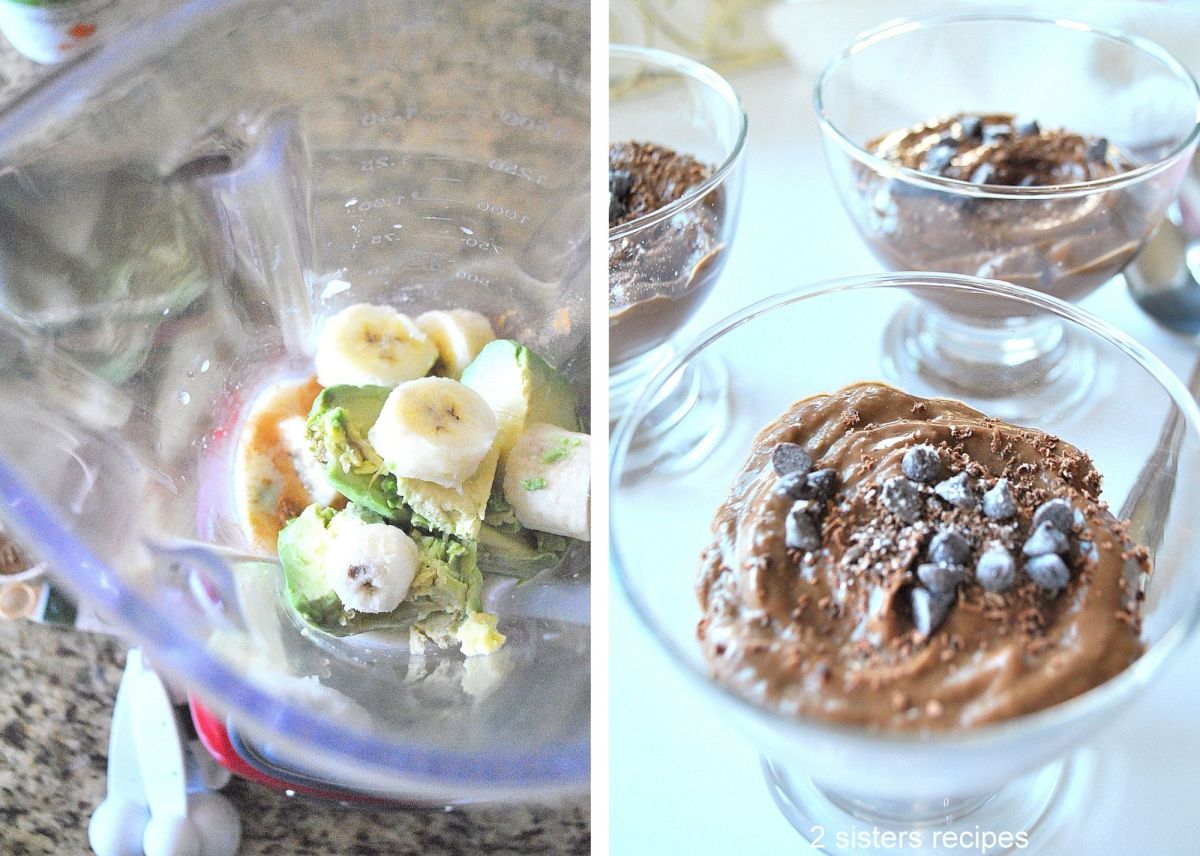Indulge in the delightful world of dairy-free and egg-free puddings! This exploration unveils a spectrum of creamy, dreamy desserts crafted without traditional dairy or eggs. Discover the secrets to achieving luxuriously smooth textures and intensely satisfying flavors using innovative plant-based alternatives. From the subtle sweetness of coconut milk to the rich depth of cashew cream, we’ll journey through a variety of pudding bases, exploring their unique properties and flavor profiles. Prepare to be amazed by the versatility of these recipes, easily adaptable to suit any palate, from classic vanilla to exotic fruit combinations.
We’ll delve into the art of creating the perfect pudding consistency, examining various thickening agents and techniques. Learn how to master the balance of sweetness, experimenting with different sweeteners and flavor combinations to craft your own signature dessert. Finally, we’ll elevate your pudding creations with stunning presentation ideas and exquisite garnishes, transforming each dessert into a visual masterpiece.
Flavor Combinations and Sweeteners
Creating delicious dairy-free and egg-free puddings hinges on skillful flavor pairings and the thoughtful selection of sweeteners. The right combination can transform a simple base into a complex and satisfying dessert. The choice of sweetener significantly impacts both the texture and the overall taste, offering a wide range of possibilities for customization.
Sweetener Impact on Texture and Taste
Different sweeteners contribute unique characteristics to the final pudding. Maple syrup, for instance, lends a rich, caramel-like flavor and a slightly thicker consistency due to its higher viscosity. Agave nectar, on the other hand, offers a milder sweetness and a smoother, more fluid texture. Dates, when blended into a paste, provide a natural sweetness with a subtle caramel note and contribute to a creamier, almost fudge-like texture. The choice depends entirely on the desired flavor profile and mouthfeel. For example, a light and airy pudding might benefit from agave nectar, while a richer, denser pudding could be enhanced with maple syrup or date paste.
Pudding Flavor Combinations
| Pudding Base | Flavor Profile | Sweetener | Texture Description |
|---|---|---|---|
| Cashew Cream | Vanilla Bean | Maple Syrup | Smooth, creamy, slightly thick |
| Coconut Milk | Chocolate | Agave Nectar | Silky, rich, slightly less thick than cashew |
| Oat Milk | Strawberry | Dates | Creamy, slightly chunky from blended dates, moderately thick |
| Almond Milk | Lemon & Lavender | Honey | Light, airy, delicate |
| Soy Milk | Toasted Coconut | Coconut Sugar | Medium thickness, subtly sweet, with coconut flakes for added texture |
Unique Flavor Combinations
Three unique flavor combinations, incorporating unusual ingredients, are presented below. These combinations aim to create unexpected and delightful taste experiences.
First, a Black Sesame & Matcha Pudding uses a base of blended white beans, providing a naturally creamy texture. The earthy notes of black sesame seeds are balanced by the subtle bitterness of matcha powder, and the sweetness is provided by a light drizzle of rice malt syrup. The resulting pudding offers a complex flavor profile with a smooth, velvety texture. Imagine the deep green color of the matcha subtly contrasting with the black sesame seeds sprinkled on top.
Second, a Cardamom & Rosewater Pudding, based on coconut milk, offers a fragrant and delicate flavor profile. The warm spice of cardamom is beautifully complemented by the floral aroma of rosewater, creating a luxurious and exotic experience. A touch of orange blossom water adds another layer of complexity. The sweetness is achieved using a combination of agave nectar and a hint of finely grated orange zest, creating a delicately sweet pudding with a creamy, light texture. The pale pink hue of the pudding would be visually appealing.
Third, a Salted Caramel & Popcorn Pudding utilizes a cashew cream base. The classic combination of salted caramel is elevated with the addition of finely crushed popcorn, providing a surprising textural contrast. The sweetness comes from a blend of maple syrup and a pinch of sea salt, creating a balanced flavor profile. The pudding would be a creamy, caramel-colored delight with small pieces of crunchy popcorn scattered throughout, creating a pleasing contrast in texture and taste. The salty sweetness is a delicious and unexpected twist.
Step-by-Step Recipe Development (Coconut Milk Base)

This recipe details the creation of a luxuriously smooth and creamy coconut milk-based pudding, perfect for those seeking a dairy-free and egg-free dessert option. The richness of the coconut milk provides a naturally sweet and decadent base, easily adaptable to various flavor profiles. The key to success lies in careful attention to detail during the cooking process, ensuring a perfectly balanced texture and avoiding common pitfalls of dairy-free cooking.
Ingredients
The foundation of this recipe relies on high-quality ingredients to achieve optimal results. Using full-fat coconut milk ensures a creamy texture, while cornstarch acts as a thickening agent. The sweetener can be adjusted to personal preference.
- 1 can (13.5 oz) full-fat coconut milk, refrigerated overnight
- 1/4 cup cornstarch
- 1/2 cup granulated sugar (or your preferred sweetener, such as maple syrup or agave nectar – adjust to taste)
- 1/4 teaspoon salt
- 1 teaspoon vanilla extract
- Optional: 1/4 cup shredded coconut for garnish
Equipment
Having the right tools ensures a seamless cooking process. A saucepan for gentle heating and a whisk for smooth incorporation of ingredients are essential.
- Medium saucepan
- Whisk
- Measuring cups and spoons
- Serving bowls or glasses
Method
This method guides you through the careful process of creating a perfectly smooth and creamy pudding. Gentle heating and consistent whisking are crucial to avoid lumps and ensure a homogenous texture.
- Prepare the Coconut Milk: Scoop out the thick, solidified cream from the top of the refrigerated can of coconut milk, leaving the watery liquid behind. This separation is key to achieving a richer, creamier texture.
- Whisk Dry Ingredients: In a medium bowl, whisk together the cornstarch, sugar, and salt until well combined. This prevents clumping later in the cooking process.
- Combine and Cook: Add the coconut cream to the saucepan and heat over medium-low heat. Gradually whisk in the dry ingredient mixture, ensuring no lumps form. Continue whisking constantly until the mixture thickens and comes to a gentle simmer. This usually takes about 5-7 minutes.
- Simmer and Thicken: Reduce the heat to low and simmer for another 2-3 minutes, whisking continuously, until the pudding reaches your desired thickness. The pudding will continue to thicken as it cools.
- Stir in Flavorings: Remove the saucepan from the heat and stir in the vanilla extract. This step should be done off the heat to prevent the vanilla from losing its delicate flavor.
- Cool and Chill: Pour the pudding into individual serving bowls or glasses. Cover the surface with plastic wrap to prevent a skin from forming and refrigerate for at least 2 hours, or preferably overnight, to allow the pudding to fully set and chill.
Serving Suggestions
This versatile pudding can be enjoyed in many ways. A simple garnish can elevate the presentation and add a delightful textural contrast.
- Serve chilled, garnished with shredded coconut, a sprinkle of cocoa powder, or fresh berries.
- Top with chopped nuts or a drizzle of melted dark chocolate for added richness.
- Layer with other fruits like mango or pineapple for a tropical twist.
Tips and Tricks
Using full-fat coconut milk is crucial for achieving a rich and creamy texture. Refrigerating the coconut milk overnight allows for easy separation of the cream from the liquid, enhancing the creaminess.
Avoid high heat, as this can cause the pudding to scorch or become grainy. Gentle, consistent whisking prevents lumps from forming and ensures a smooth consistency.
If the pudding is too thick, add a tablespoon or two of the reserved coconut water to thin it out. Conversely, if it’s too thin, continue to simmer for a few more minutes, whisking constantly.
Thickening Agents and Techniques
Achieving a luxuriously smooth and creamy texture in dairy-free and egg-free puddings requires careful selection and implementation of thickening agents. These agents interact with the liquid components of the pudding, creating a thicker, more cohesive consistency. The choice of thickening agent impacts not only the final texture but also the flavor and overall mouthfeel.
Arrowroot Powder
Arrowroot powder, derived from the arrowroot plant, is a versatile and effective thickening agent for vegan puddings. Its neutral flavor allows it to seamlessly blend into various flavor profiles without imparting any unwanted tastes. Arrowroot powder works by absorbing liquid and forming a gel-like structure upon heating. It produces a clear, smooth pudding with a delicate texture, ideal for lighter puddings. Overheating can cause arrowroot to become gummy, so it’s crucial to whisk it continuously into the hot liquid and avoid prolonged cooking after thickening. A pudding made with arrowroot powder possesses a silky, almost ethereal quality, reminiscent of a classic crème anglaise but without the dairy.
Cornstarch
Cornstarch, a widely available and economical thickening agent, provides a robust thickening power. It creates a pudding with a slightly more opaque and firm texture compared to arrowroot. Cornstarch’s thickening ability is also temperature-dependent; it needs to be cooked to activate its thickening properties. Unlike arrowroot, cornstarch can impart a slightly starchy taste if not incorporated correctly, requiring careful attention to detail. To prevent lumping, cornstarch should be whisked into a small amount of cold liquid to form a slurry before gradually adding it to the hot liquid base, whisking continuously. A pudding thickened with cornstarch exhibits a fuller, richer body, suited to denser puddings or those with robust flavors.
Tapioca Starch
Tapioca starch, extracted from the cassava root, offers a unique thickening experience. It produces a pudding with a characteristically chewy texture and a slightly translucent appearance. Tapioca starch thickens more slowly than cornstarch or arrowroot, requiring slightly longer cooking time. It possesses a subtly sweet flavor, which complements many dessert profiles. It’s also less prone to creating a gummy texture if slightly overcooked, providing some flexibility in the cooking process. To use tapioca starch effectively, mix it with a cold liquid to create a smooth slurry, similar to cornstarch, and then whisk it into the heated pudding base, stirring until the desired thickness is reached. The resulting pudding offers a delightful, almost bouncy texture, perfect for puddings with tropical fruit flavors.
Recipe Examples
The following simple recipe examples demonstrate the use of each thickening agent. These recipes use a coconut milk base, a popular choice for dairy-free puddings. Remember to always whisk continuously when adding the thickening agent to prevent lumps.
Simple Coconut Pudding with Arrowroot: Combine 1 can (13.5 oz) full-fat coconut milk, 1/4 cup sugar, 1/4 cup arrowroot powder, and a pinch of salt. Whisk continuously while heating over medium heat until thickened.
Simple Coconut Pudding with Cornstarch: Combine 1 can (13.5 oz) full-fat coconut milk, 1/4 cup sugar, 2 tablespoons cornstarch (mixed with 2 tablespoons cold water), and a pinch of salt. Whisk continuously while heating over medium heat until thickened.
Simple Coconut Pudding with Tapioca Starch: Combine 1 can (13.5 oz) full-fat coconut milk, 1/4 cup sugar, 3 tablespoons tapioca starch (mixed with 2 tablespoons cold water), and a pinch of salt. Whisk continuously while heating over medium heat until thickened. Allow to simmer for a few minutes after thickening for optimal texture.
Creative Presentation and Garnishes
Elevating the simple elegance of dairy-free and egg-free coconut milk pudding requires thoughtful consideration of both presentation and complementary garnishes. The right visual elements can transform a humble dessert into a culinary masterpiece, enhancing the overall sensory experience. This section explores creative presentation ideas and unique garnish options to achieve a visually stunning and delicious final product.
Visually Appealing Presentation Ideas
Three distinct presentation styles can showcase the creamy texture and subtle hues of the coconut milk pudding. Each approach offers a unique aesthetic, appealing to different tastes and preferences.
- Layered Delight: Imagine a clear glass dessert dish showcasing the pudding layered with vibrant fruits. A base of bright red raspberries could be followed by a layer of creamy white pudding, then a layer of sliced mango, and topped with a final layer of pudding. The contrasting colors and textures create a visually captivating and refreshing dessert. The transparency of the glass allows the layers to shine through, emphasizing the beauty of the arrangement.
- Modern Minimalism: A simple, yet sophisticated presentation involves serving the pudding in a sleek, white bowl. The smooth, creamy texture of the pudding is highlighted against the clean backdrop. A single, carefully placed garnish, such as a sprig of mint or a dusting of cocoa powder, provides a subtle yet elegant touch. The minimalist approach emphasizes the purity and simplicity of the dessert itself.
- Tropical Paradise: For a more vibrant and playful presentation, consider serving the pudding in a small coconut shell. This immediately evokes a tropical atmosphere. The pudding can be garnished with toasted coconut flakes, fresh pineapple chunks, and a drizzle of passion fruit coulis. The combination of natural textures and colors creates a visually exciting and flavorful dessert, transporting the diner to a tropical getaway.
Unique Garnishes and Their Visual Appeal
The choice of garnish significantly impacts the overall visual appeal and taste of the pudding. These options offer diverse textures and colors that enhance the dessert’s sensory experience.
- Toasted Coconut Flakes: These add a delightful crunch and a subtle toasted coconut flavor. Their golden-brown hue provides a beautiful contrast against the creamy white pudding. The texture is a pleasing counterpoint to the smooth, velvety pudding.
- Candied Ginger: Small pieces of candied ginger offer a vibrant pop of color and a spicy, sweet flavor that complements the subtle sweetness of the pudding. The bright orange hue of the candied ginger creates a striking visual contrast, while its chewy texture adds an interesting textural element.
- Fresh Berries with Mint: A combination of fresh raspberries, blueberries, and strawberries, accompanied by a few sprigs of fresh mint, offers a visually stunning and refreshing garnish. The vibrant colors of the berries create a beautiful contrast, and the mint adds a touch of freshness and visual interest. The contrasting textures of the soft berries and the slightly more rigid mint leaves create an interesting interplay.
Plating and Serving Suggestions
The choice of serving dish and accompanying elements significantly enhances the visual presentation.
Small, elegant bowls or ramekins are ideal for individual servings, allowing for a more intimate and refined presentation. Larger bowls can be used for sharing, creating a more communal and casual atmosphere. Consider using contrasting colors in the serving dishes to highlight the pudding’s creamy texture. For instance, a dark-colored bowl will make the light-colored pudding stand out. Accompanying elements, such as small spoons with elegant handles or decorative napkins, add a touch of sophistication and refinement.
Creating decadent, dairy-free and egg-free puddings is easier than you might think! This journey has showcased the boundless possibilities of plant-based ingredients, proving that deliciousness doesn’t require animal products. From selecting the ideal base to mastering thickening techniques and perfecting presentation, you now possess the knowledge to craft creamy, dreamy desserts that will impress even the most discerning palate. So, unleash your inner chef and embark on a culinary adventure, exploring the endless flavor combinations and visual delights that await.
FAQs
Can I make these puddings ahead of time?
Yes, many dairy-free and egg-free puddings can be made ahead of time and stored in the refrigerator for a few days. Check the specific recipe for storage instructions.
What if my pudding is too thin?
If your pudding is too thin, you can gently heat it and add more thickening agent, stirring constantly until it reaches your desired consistency.
Are all sweeteners created equal in these recipes?
No, different sweeteners affect the final texture and flavor. Some, like maple syrup, add a distinct taste, while others, like agave, are milder. Experiment to find your preference.
Can I use other types of milk besides coconut milk?
Yes, many plant-based milks like almond milk, oat milk, or soy milk can be substituted, though the final texture and flavor might vary slightly. Adjust the thickening agent accordingly.


